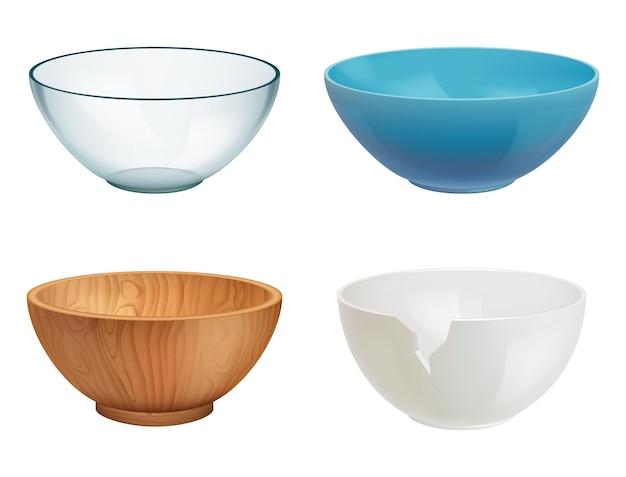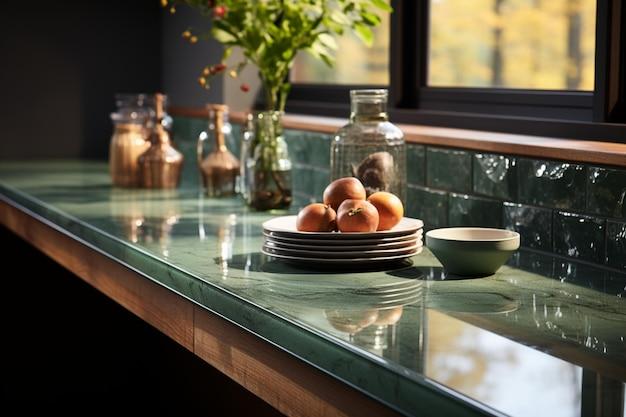In today’s highly digitized world, the use of glass has become ubiquitous, whether it’s on our smartphones, laptops, or even the windows of our homes and offices. When it comes to protecting these glass surfaces, two popular options often come to mind: ceramic glass and tempered glass. But what sets them apart? Is one better than the other?
In this blog post, we’ll explore the key distinctions between ceramic glass and tempered glass, shedding light on their strengths, weaknesses, and applications. By the end, you’ll have a clear understanding of which option might be the right fit for your needs.
So, let’s dive in and unravel the mysteries of ceramic glass and tempered glass, unraveling the myths and misconceptions along the way. If you’ve ever wondered about the differences between these two glass types or their functionality, you’re in the right place.
What Is the Difference Between Ceramic Glass and Tempered Glass
When it comes to glass, not all types are created equal. Ceramic glass and tempered glass might seem similar on the surface, but there are some key differences to be aware of. So, let’s dive in and explore the dissimilarities between these two glass types.
Ceramic Glass: A Delicate Beauty
Ceramic glass, as the name suggests, has ceramic properties that make it unique. It is often found in high-end and decorative glass products, adding a touch of elegance to any space. Ceramic glass is created by fusing together inorganic materials at high temperatures, resulting in a luxurious finish.
This type of glass has excellent thermal resistance and can withstand extreme temperatures up to 1,000 degrees Celsius (1,832 degrees Fahrenheit). It is commonly used in fireplace doors, cooktops, and wood-burning stoves, where heat resistance is a top priority.
While ceramic glass offers stunning aesthetics and exceptional heat resistance, it should be handled with care due to its brittle nature. It is more prone to shattering under impact compared to tempered glass. So, keep those rowdy kitchen mishaps in check!
Tempered Glass: Tough as Nails
Now, brace yourself for tough talk, because tempered glass means business. Unlike its delicate ceramic counterpart, tempered glass undergoes a process of extreme heating and rapid cooling, resulting in heightened strength and durability.
The main advantage of tempered glass is its ability to resist shattering. It is designed to break into small, pebble-like pieces when shattered, reducing the risk of injury. You’ll commonly find tempered glass in safety glass applications like car windows, shower doors, and glass railing systems.
With its formidable strength, tempered glass can withstand impacts that would cause regular glass to crack or shatter. But don’t get too cocky—tempered glass isn’t indestructible. It can still break under extreme force, so try to keep those superhero experiments to a minimum.
The Showdown: Ceramic Glass vs. Tempered Glass
Let’s summarize the differences between ceramic glass and tempered glass in a battle of the glass titans:
Heat Resistance: Ceramic glass takes the crown for handling high temperatures, making it perfect for fireplaces and cooktops. Tempered glass, on the other hand, can’t match that heat resistance but compensates with its greater strength.
Shattering Behavior: Ceramic glass is more prone to shattering upon impact, while tempered glass excels at staying intact or breaking into safer pieces.
Applications: Ceramic glass adds a touch of luxury to decorative glass products, whereas tempered glass is the go-to option for safety-oriented applications.
Ultimately, the choice between ceramic glass and tempered glass depends on the specific needs of your project. So, before making your glassy decision, consider factors like heat resistance, strength, and the level of risk involved.
Now that you’re armed with glassy knowledge, it’s time to raise your glass and toast to understanding the differences between ceramic glass and tempered glass. Cheers, my glass-savvy friends!
Frequently Asked Questions about the Difference between Ceramic Glass and Tempered Glass
When it comes to glass, there are various types available, each with its own unique properties and benefits. Two popular options that often get compared are ceramic glass and tempered glass. In this FAQ-style guide, we will address some common questions that may arise regarding the difference between these two types of glass. Let’s get started!
1. Is Tempered glass worth it
Tempered glass is definitely worth considering, especially for those seeking extra durability and safety. Due to the tempering process, which involves heating and cooling rapidly, tempered glass becomes stronger and more resistant to breakage compared to regular glass. It’s ideal for areas that require a higher degree of safety, such as shower doors or car windows.
2. Which is better: liquid screen protector or tempered glass
When it comes to protecting your device’s screen, tempered glass takes the crown. While liquid screen protectors offer some level of protection against scratches, they can’t compete with the impact resistance of tempered glass. So, if you want to safeguard your precious smartphone or tablet from accidental drops, tempered glass is the way to go.
3. What is better than tempered glass
When it comes to finding a glass option that surpasses the strength of tempered glass, you might need to venture into the world of reinforced glass or laminated glass. These types of glass incorporate multiple layers and materials to provide even greater strength and resilience.
4. Why does ceramic break glass so easily
Contrary to what the phrase might suggest, ceramic itself doesn’t break glass. The confusion arises from the term “ceramic glass,” which refers to a type of glass-ceramic material that combines the properties of both ceramics and glass. This material is designed to be break-resistant, not easily broken.
5. Is Tempered glass stronger than annealed
Absolutely! Tempered glass is significantly stronger than annealed glass. Annealed glass goes through a different manufacturing process that doesn’t involve the rapid heating and cooling that tempering employs. As a result, annealed glass is more prone to breakage and shattering, making tempered glass the superior choice for durability.
6. Does all ceramic break glass
No, not all ceramics break glass. Ceramic materials can vary greatly in terms of their strength and properties. While some ceramics are fragile and prone to breakage, others, like the glass-ceramic mentioned earlier, are engineered to be highly resilient and resistant to breakage.
7. What is the toughest screen protector
If you’re searching for the ultimate screen protector, look no further than tempered glass. With its superior strength and ability to withstand impact, it’s considered one of the toughest options available. It adds a strong layer of defense to your device, giving you peace of mind in those accidental drop moments.
8. What is ceramic glass used for
Ceramic glass, also known as glass-ceramic, has a range of applications. Its unique properties, such as high temperature resistance and resistance to thermal shock, make it ideal for use in cooktops, fireplace windows, oven doors, and laboratory equipment. Its versatility and ability to withstand extreme conditions make it a popular choice in many industries.
9. Why glass ceramics are not transparent
The opaque nature of glass ceramics arises from their unique composition and crystalline structure. While the initial glass material may have been transparent, the controlled crystallization process during manufacturing creates small crystals within the glass matrix, scattering light and resulting in an opaque appearance.
10. Do Ceramic spark plugs break glass
Ceramic spark plugs, despite their strength and durability, are unlikely to break glass on their own. However, if a ceramic spark plug were to hit a glass surface with sufficient force, it could potentially cause damage. So, it’s best to be cautious when handling any objects near fragile glass.
11. Is ceramic tempered glass good
There is no such thing as ceramic tempered glass. Ceramic glass and tempered glass are two distinct types of glass. Ceramic glass refers to a glass-ceramic material, while tempered glass is regular glass that has undergone a specific heating and cooling process to increase its strength. Each has its own merits depending on the specific application.
12. Who makes ceramic glass
Ceramic glass is produced by various manufacturers specializing in glass-ceramic materials. Some well-known companies in this field include Schott AG, Corning Incorporated, and Pyroceram by Corning. These companies have extensive expertise in developing high-quality glass-ceramic products for a range of industries.
13. How can you tell if glass is tempered
Differentiating between tempered and regular glass can be challenging with the naked eye alone. However, there are a few signs to look out for. Tempered glass often has slightly curved edges and may exhibit a characteristic pattern known as “quench marks” or “stress lines” near the edges. Additionally, tempered glass is more resilient to breakage and tends to shatter into small, rounded pieces rather than sharp shards.
14. Can you drill holes in tempered glass
Drilling holes in tempered glass can be challenging due to its increased strength and resistance to breakage. While it is possible to drill holes in tempered glass using specialized techniques and tools, it is highly recommended to seek professional assistance to avoid damaging the glass or compromising its integrity.
15. How can you tell the difference between ceramic and tempered glass
Ceramic glass and tempered glass can generally be distinguished by their composition and manufacturing process. Ceramic glass, as mentioned earlier, is a glass-ceramic material combining properties of both ceramics and glass. On the other hand, tempered glass is regular glass that has been treated through a rapid cooling process to enhance its strength and safety features.
16. How do you break glass silently
Breaking glass silently requires finesse and caution. While we don’t encourage breaking glass unnecessarily, if you find yourself in a situation where you need to do so quietly, consider using adhesive duct tape to cover the glass surface. By creating tension and pressure, carefully hitting the taped area with a blunt object can sometimes result in a quieter break.
17. Is ceramic glass clear
Ceramic glass can have varying degrees of transparency. Some glass-ceramic materials are designed to be opaque or translucent, while others are transparent. The desired level of transparency depends on the specific application and the composition of the glass-ceramic material.
18. Can I use a phone without tempered glass
Certainly! Using a phone without a tempered glass screen protector is possible. However, keep in mind that without this additional layer of protection, your phone screen is more susceptible to scratches, cracks, and shattering in the event of an accidental drop. It’s always wise to weigh the potential risks against the cost of replacing a damaged screen.
19. Is Tempered glass expensive
Compared to regular glass, tempered glass does tend to be slightly more expensive due to the additional manufacturing processes involved in its production. However, considering the enhanced safety and durability it provides, the slightly higher cost is often well worth the investment in the long run.
20. Is ceramic or tempered glass better
The answer to this question depends on the specific requirements of your intended application. Ceramic glass, with its unique combination of properties, is well-suited for high-temperature applications and environments where thermal shock resistance is crucial. On the other hand, tempered glass offers superior strength and safety features, making it a popular choice for everything from windows and doors to smartphone screen protectors. Choose the glass type that best aligns with your needs and priorities.

